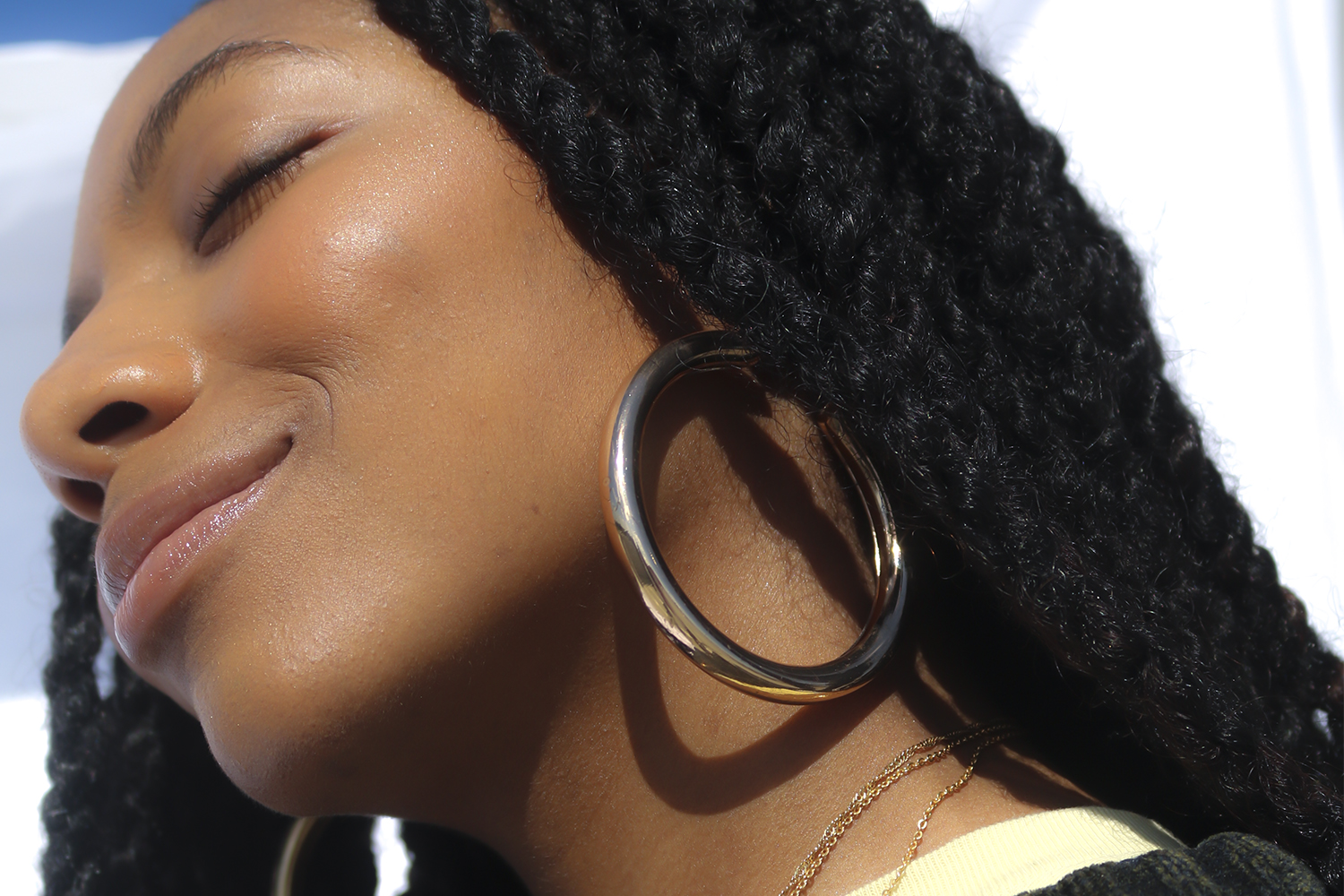Hoops are proof that there is beauty in diversity–from the chunky and rail-thin styles, to small, medium, large and bamboo. In black and latino culture, gold hoops are to the ears as nameplate necklaces are to the collar bone. Therefore, I received my first pair of little gold hoops when I was only a few months old, as soon as my tiny ear piercings healed. Still, there was a period in time where I stopped wearing my hoop earrings, trading them for popular jewels from Claire’s, which was an honest downgrade.
Hoop earrings date to the continent of Africa as far back as 2500 B.C. A quick search of the Brooklyn Museum’s collection will produce hoop earrings from ancient civilizations such as the Sumarians, Egyptians and Nubians. In Eyptian society, the earrings were a sign of status for wealthy men, women and children. Yet, in modern times they carry a very different connotation.
In the 1960s and ‘70s the hoop earring was often associated with activist women like Anglea Davis who paired them with a bold afro. In the 1980s hoops became a signature of the Latino “Chola” subculture. These women, who often dealt with gang violence and poverty were characterized by thick winged eyeliner, pencil-thin eyebrows, dark lined lips and teased hair. In the ‘90s, hoop earrings became the statement of choice for black artists like Lauryn Hill and Mary J. Blige.
In March of 2017, the phrase “white girls, take off your hoops!” was spray painted across a wall at Pitzer College, reopening the debate of who hoop earrings belong to, if anyone at all. Personally, I think it’s too late to “remove” hoops from the mainstream, as they are far from a fleeting trend. So, while hoops do not belong to women of color alone, they must at the least be recognized as a symbol of black culture.
Alexandria Ocasio-Cortez (or AOC for short) chose to wear hoop earrings and a red lip for her swearing in as the youngest woman ever in Congress in 2018. She later addressed the look in a powerful tweet: “Next time someone tells Bronx girls to take off their hoops, they can just say they’re dressing like a Congresswoman.”
In the later part of high school I eased back into hoops starting with a smaller pair from cult jewelry brand Mejuri. I was comfortable.
Then one day, a guy was staring at the four piercings on my ear. He commented on how beautiful they were but had one suggestion, “I think you should try bigger hoops.” Subconsciously, I was scared of bigger hoops and when I ran the idea by my mom you could hear the hesitation in her voice. “Exactly, how big?,” she asked.
The hidden message lies in the fact that hoops that are too big, worn by a person of color, can easily be interpreted as too black, too loud, too ghetto.
I received the perfect size upgrade for Christmas–a bigger hoop, with a thinner frame. I’ve slept in them every night since. I’ve removed them only once and when I looked in the mirror I felt naked, and incomplete, like I was missing something. It’s hard to believe I gave them up.
You see, in the culture, hoop earrings are more than an accessory, more than an added touch of sass or edge. They are a part of who we are as a people.
Words: Hannah Harris
Photo: Xavier Simms-Jackson
Model: Taylor Alexander
Stylist: Asia Davis

